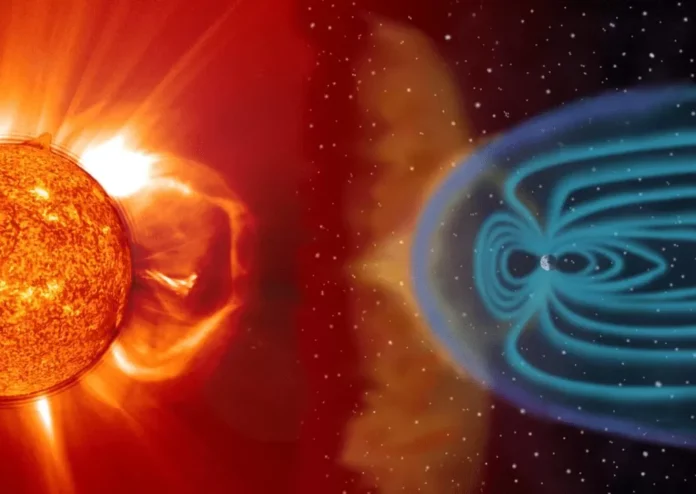Solar Cycle 25 is about to hit its peak, making this an important time to increase space weather monitoring. As we enter this new phase of the solar cycle, it is crucial that we pay attention to space weather and its potential impact on our planet.
The sun goes through a natural cycle of activity, known as the solar cycle. This cycle lasts approximately 11 years and is characterized by changes in the sun’s magnetic field and the number of sunspots on its surface. These changes can have a significant impact on space weather, which refers to the conditions in space that can affect Earth and its technological systems.
As we approach the peak of Solar Cycle 25, it is essential that we increase our monitoring of space weather. This is because the sun’s activity is expected to intensify, leading to more frequent and severe space weather events. These events can disrupt satellite communications, GPS systems, and even power grids on Earth. Therefore, it is crucial that we have a better understanding of space weather and its potential impact on our daily lives.
One of the main reasons why space weather monitoring is more critical now than ever before is our increasing reliance on technology. In today’s digital age, we are heavily dependent on satellites for communication, navigation, and weather forecasting. Any disruption in these systems can have a significant impact on our daily lives, from delayed flights to disrupted internet and phone services. Therefore, it is crucial that we have a better understanding of space weather and its potential impact on our technological systems.
Moreover, as we continue to explore and expand our presence in space, the need for space weather monitoring becomes even more critical. Astronauts and spacecraft are also vulnerable to space weather events, such as solar flares and coronal mass ejections. These events can expose them to high levels of radiation, which can be harmful to their health and the equipment on board. Therefore, it is essential to have accurate and timely space weather information to ensure the safety of our astronauts and spacecraft.
Fortunately, advancements in technology have made it possible to monitor space weather more effectively. Satellites equipped with specialized instruments can provide real-time data on solar activity and its potential impact on Earth. This data is then analyzed by scientists and researchers to better understand space weather and its effects. Additionally, ground-based observatories and radars also play a crucial role in monitoring space weather and providing early warnings of potential disruptions.
However, despite these advancements, there is still much to learn about space weather. The more we understand about the sun’s activity and its impact on Earth, the better prepared we will be to mitigate its effects. This is why it is crucial to continue investing in space weather research and monitoring.
Furthermore, as we enter the peak of Solar Cycle 25, it is also essential to raise awareness about space weather and its potential impact. Many people are still unaware of the significance of space weather and how it can affect their daily lives. By educating the public, we can ensure that people are prepared for any potential disruptions and take necessary precautions.
In conclusion, as Solar Cycle 25 reaches its peak, it is crucial that we increase our monitoring of space weather. With our increasing reliance on technology and our continued exploration of space, the need for accurate and timely space weather information has never been more critical. By investing in research and raising awareness, we can better understand space weather and its potential impact, ensuring the safety and well-being of our planet and its inhabitants. Let us work together to make space weather a top priority and pave the way for a more resilient future.

